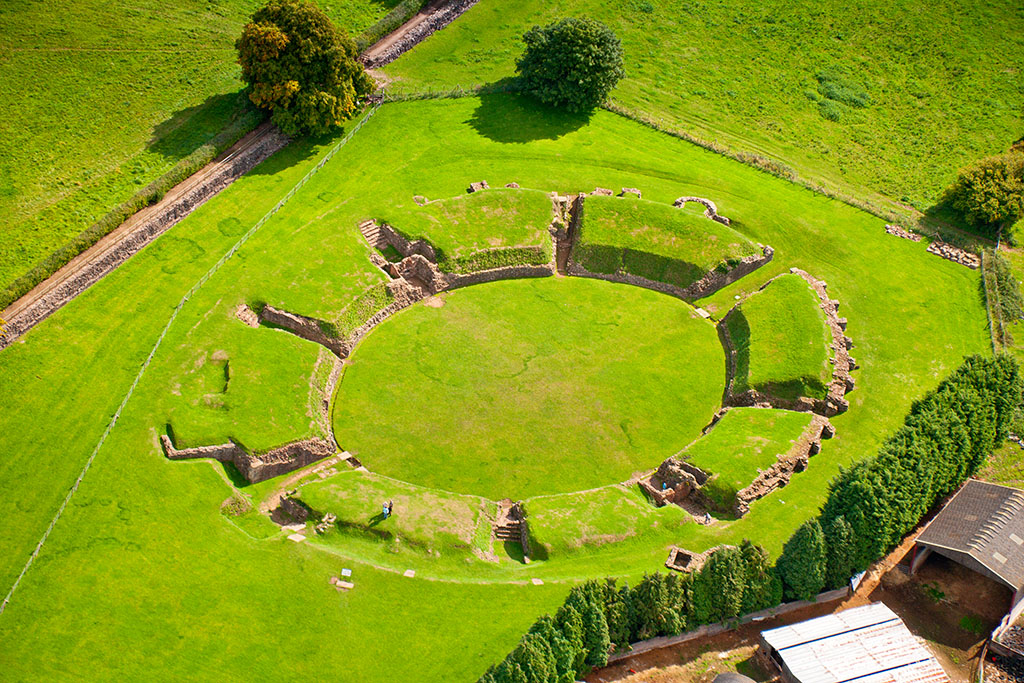Did you know you could visit Camelot?
When we think about Arthurian legends, most of us imagine it as an extravagant fiction. There have been innumerable retellings and interpretations of the lives of King Arthur and his Knights of the Round Table. Some involve magic, others monsters, and all a healthy dose of romanticism. But none of them are to be taken literally. Most notably, the idea of the knights’ mythical home – Camelot – often appears to be an evasive concept, and a pure fiction.
Perhaps the most accurate take on our traditional view of Camelot, even if it was brought about as a joke, came in the iconic comedy Monty Python And The Holy Grail. In this film, Arthur and his knights journey to Camelot only to see it in the distance and decide not to go, because “it is a silly place.” Patsy, a squire in the party, even remarks that the castle is only a model, which as it turns out was true. The film used a 12-foot high cutout of a castle to represent Camelot, and the characters never actually went there – perhaps inadvertently speaking to the idea that it’s more of an imagined place.
There are also Arthurian narratives and interpretations in which the home of the knights isn’t really part of the picture to begin with. We need only turn to one of the more modern pop culture takes on Arthur and his knights to see this style of interpretation in play. “Excalibur” is an online game produced by NetEnt that makes use of some of the most popular characters and tales from lore. The game builds as lot reel around the concept of Arthur and his knights off hunting and collecting new characters along the way. It’s authentically Arthurian, and yet without a mention of Camelot at all.
These ideas – that Camelot is elusive, imagined, or even nonessential to the Arthur tales – are perhaps more appropriate than the alternative vision of Arthur’s home as an idyllic, Disney-like castle paradise. But as historians have determined, they may not actually be accurate. There is fairly strong evidence to suggest that while the Arthurian legends are essentially fiction, an Arthur did exist – and he did have a home in Britain.
Specifically, Arthur was a Roman general stationed on the British Isles who can be found in legitimate historical references. What feats of heroism he may have accomplished in order to inspire the legends of King Arthur are up for debate. But his existence is fairly widely accepted at this point, and there is strong evidence that his home, the real Camelot, was in modern day Caerleon, South Wales.
As it happens, multiple texts place Camelot in Caerleon, which is one of three Roman legionary forts in Britain. The real Arthur, again, is thought to have been a Roman military leader defending Britain from the Anglo-Saxons of the North. And the Welsh are descendants of the Romano-Britons. The evidence is not 100 percent concrete, but it is quite strong that the true Arthur resided at least for a time in the area that is now the beautiful and relaxing town of Caerleon.
Today you can visit with ease, and enjoy several different ways of delving into Roman history. The National Roman Legion Museum shows you what the area might have been like many hundreds of years ago under Roman occupation. The public baths (and swimming pools) are open and operational, as versions of them may have been in Roman times. There are occasional reenactments of Roman battles and formations. And best of all, you can explore the grass-covered ruins of the Roman amphitheatre in town. Incidentally it’s completely round, and it’s not hard to allow your imagination to place a similarly shaped table right at its centre.
It’s not a stretch to say that to visit this beautiful Welsh town is to bask in the lingering aura of the real life Camelot.
